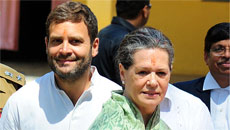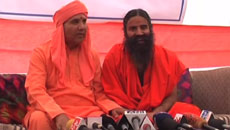In what could be a major boost to technologically-empowered wildlife surveillance and research in India, plans are afoot to introduce unmanned aerial vehicles (UAVs) or drones in 10 biodiversity-rich sites across India by January 2015.
Following successful pilot runs in Madhya Pradesh's Panna Tiger Reserve (PTR) earlier this year, use of drones has brought into the spotlight the importance of technology in wildlife management and conservation.
These low-cost, hand-launched machines, capable of autopilot missions (through GPS) can record images and videos and transmit them on a real-time basis.
In addition, they can be equipped with night-vision cameras for surveillance in the dark in remote areas. Besides watching out for tigers and other animals, drones can aid in keeping tabs on poachers and also support census activities.
"Currently the proposal is being developed to upscale it to 10 sites. We are aiming for a five-year project. If we get the required approvals, we could start in January 2015. This will add to the existing infrastructure in wildlife research and management as well as surveillance," K. Ramesh, UAV programme coordinator, Wildlife Institute of India (WII), Dehradun, told IANS over the phone.
The PTR initiative, organised by the National Tiger Conservation Authority (NTCA), was a collaborative venture between WII, US-based company Conservation Drones and World Wide Fund for Nature (WWF) International.
It was given the clean chit by the defence ministry, after which it was kicked off in January. Similar permits would be necessary for the scale-up as well.
Ramesh said it's high time that India applied such multi-faceted approaches to wildlife, seeing that such measures are being used to keep an eye out on critically endangered animal species and human activities in countries like Nepal and Indonesia.
"Given India's vast biodiversity and the issues plaguing wildlife, aerial surveillance is of urgent need. We are including 10 sites, corresponding to each of the bio-geographic zones of the country in the plan. These include the Sunderbans, the Himalayas, the Western Ghats and other landscapes, the scientist said.
In addition to acting as a deterrent to poachers, Ramesh said, technological interventions could also make the field of wildlife management look "attractive" and "lift the morale" of officials.
Ramesh said the drones would be indigenously sourced and proper training of officials would be carried out to ensure operational efficiency.
"They can stay up in the air from 30 minutes to an hour. For wildlife surveillance missions, we do not need more than 20 to 30 minutes of flight time. Each unit will not cost more than Rs. 5 lakh," Ramesh pointed out.
The detailed proposal will be presented to the National Tiger Conservation Authority for funding.
"Difficult terrain where people can't go on foot or by vehicle can become accessible," A.S.P. Yadav, deputy inspector general of the NTCA, told IANS.
Leading conservationist Nitin Desai welcomed the drone plan.
"Any kind of advanced technology for wildlife protection and conservation is welcome," Desai, director (Central India), Wildlife Protection Society of India (WPSI), told IANS.





